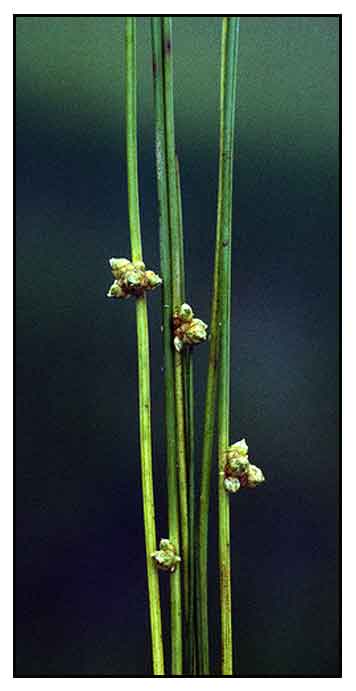
Family • Cyperaceae
Apurau
Schoenoplectiella articulata (L.) Lye
BULRUSH
Jie bao shui cong
| Scientific names | Common names |
| Eleocharis incurvata (Roxb.) Schult. | Apurau (Tag.) |
| Holoschoenus incurvatus (Roxb.) A. Dietr. | Gauai-gauai (S. L. Bis.) |
| Holoschoenus subarticulatus (Roxb.) A. Dietr. | Bulrush (Engl.) |
| Isolepis articulata (L.) Nees | |
| Isolepis fistulosa (Forssk.) Delile | |
| Isolepis incurvata (Roxb.) Nees | |
| Isolepis prolongata Nees | |
| Isolepis rugosa Boeckeler | |
| Schoenoplectiella articulata (L.) Lye | |
| Schoenoplectus articulatus (L.) Palla | |
| Schoenoplectus fistulosus (Forssk.) Sojak | |
| Schoenoplectus pseudoarticularis (Dai & Huang) Liang & Zhang | |
| Scirpus articulatus L. | |
| Scirpus fistulosus Forssk. | |
| Scirpus incurvatus Roxb. | |
| Scirpus pseudoarticulatus L.K. Dai & S.M.Huang | |
| Scirpus subarticulatus Roxb. | |
| Scirpus articulatus L. is a synonym of Schoenoplectiella articulata (L.) Lye The Plant List | |
| Schoenoplectiella articulata (L.) Lye is an accepted name The Plant List | |
| Other vernacular names |
| ASSAMESE: Sesu-bon, Mitmiti-bon. |
| CHINESE: Jie bao shui cong. |
| MALAYALAM: CHELLI. |
Distribution Constituents Properties Studies Availability |
Updated December 2020 /July 2018 / July 2016
![]()
 |
| PHOTOS / ILLUSTRATIONS |
| IMAGE SOURCE: / Photo: Scirpus articulatus / Part of the image collection of the International Rice Research Institute (IRRI) / Creative Commons Attribution-NCSA2.0 / click on image to go to source page / flickr / |
Additional
Sources and Suggested Readings |
| It is not uncommon for links on studies/sources to change. Copying and pasting the information on the search window or using the DOI (if available) will often redirect to the new link page. |
DOI |
• |
| List of Understudied Philippine Medicinal Plants |
 |

 Botany
Botany